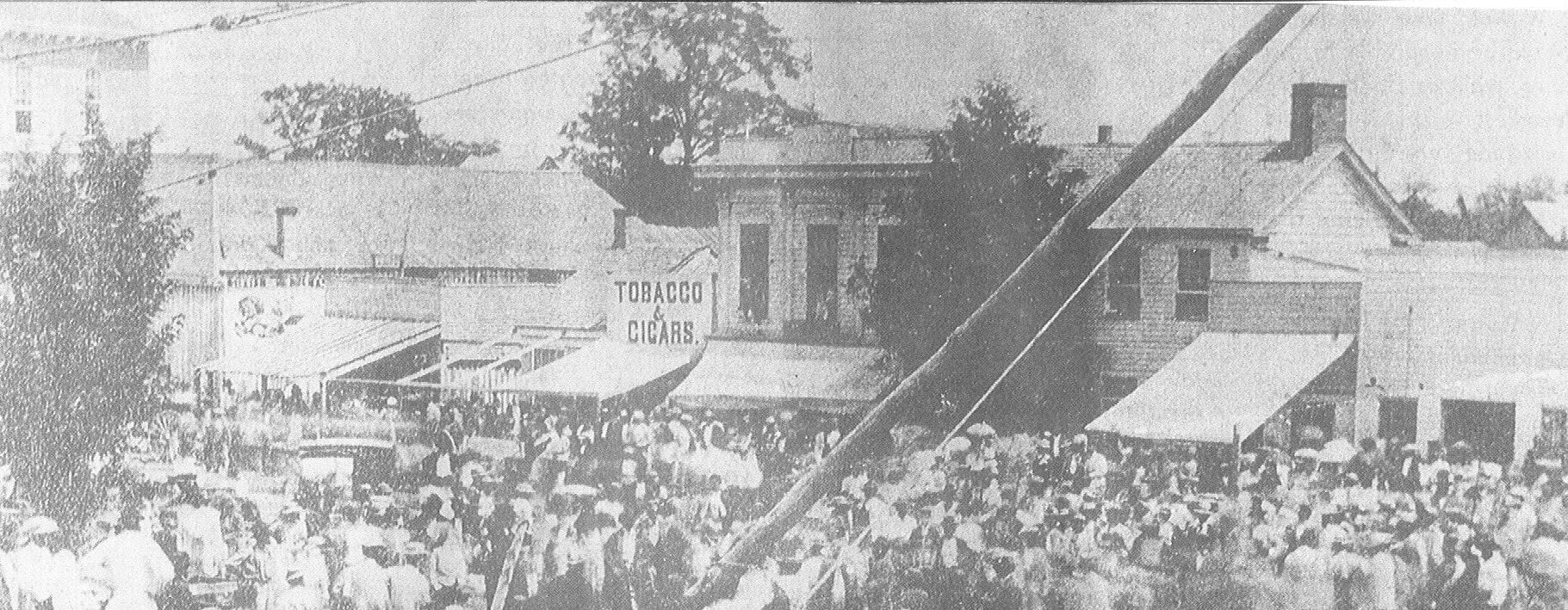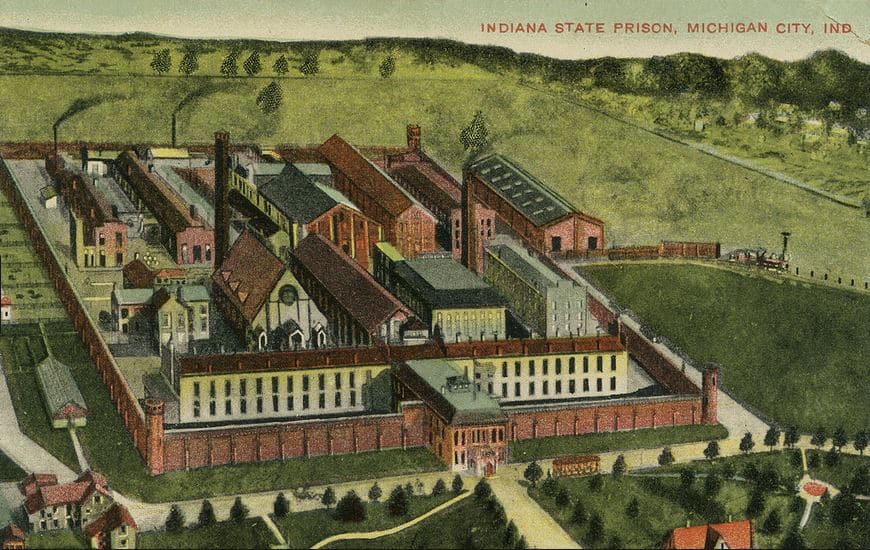Edward Hill: Another Noblesville Artist
By: David Heighway, Hamilton County Historian
As you do research into Hamilton County history, you find the stories of many unique people. While working on the lives of early county artists, I found one named Edward Hill, whose life went in a very dark direction.

According to the only census that he appears on, he was born in April 1852 in Indian Territory (Oklahoma). We don’t know when he came to Noblesville, but his name first appeared in the September 24, 1875, issue of the Ledger when it said, “Fred Chappell and Ed Hill are in the sign painting business.” Hill had several different business partners while he was in Noblesville.
A Noblesville storeowner named F. P. Zeit named his establishment the “Palace” and made the interior very ornate. The newspaper said that it had, “brilliant decorations, tasty frescoing, and elaborate adornment throughout, together with the painting of shelving and furniture” done the by company of Hill & Oliphant (Ledger, Feb. 23, 1877). The next year, the Granger & Johnson drug store had its ceiling “neatly frescoed” by Ed Hill and Millard Oliphant (Ledger, Feb. 8, 1878).
Later in 1878, Hill and Oliphant decided to change businesses and became the proprietors of the Gall House billiard saloon (Ledger, July 12, 1878). They put their decorating skills to work and painted statuary on the walls. Hill used the windows to display examples of his own work. In January of 1879, the newspaper did an elaborate description of a couple of paintings that he had created of Noblesville individuals – Pete Stern fishing in the White River and Sam Craig holding a bunch of turnips (Ledger, Jan. 31, 1879).
Hill evidently sold his share of the billiard hall, because he moved to Indianapolis in March of 1879. Then he returned to Noblesville and began working for Hare & Sons in August, as well as painting signs for Truitt & Co. in October. He moved back to Indianapolis in May 1880 to work at a carriage company. The newspaper said that he and another man who had moved were both “first class workmen”.
 Nothing more can be found about Hill until October of 1892. While living in Anderson, he was charged with a criminal assault on a six-year-old girl and was arrested just as he was being threatened with a lynching. It’s difficult to follow the case because the newspapers were inconsistent with the name of the girl’s family – calling them “McBride”, “McByrne”, and “O’Brien”. Hill was sentenced to seven years in the Indiana State Prison at Michigan City in February of 1893.
Nothing more can be found about Hill until October of 1892. While living in Anderson, he was charged with a criminal assault on a six-year-old girl and was arrested just as he was being threatened with a lynching. It’s difficult to follow the case because the newspapers were inconsistent with the name of the girl’s family – calling them “McBride”, “McByrne”, and “O’Brien”. Hill was sentenced to seven years in the Indiana State Prison at Michigan City in February of 1893.
A Noblesville paper remembered him from his time in the area and made the comment – “He was sent up from Anderson. Out of a city with a population of 1.800 souls, not one person could be found to testify on his behalf.”
Hill was listed in the 1900 census while incarcerated and a reporter from the Ledger visited the prison in 1901. The reporter said that Hill was serving his second term, but didn’t say what it was for. Hill died in prison April 17, 1909. He had no next of kin, and his parents were listed as unknown on the death certificate. He was probably buried in the cemetery on the prison grounds.
